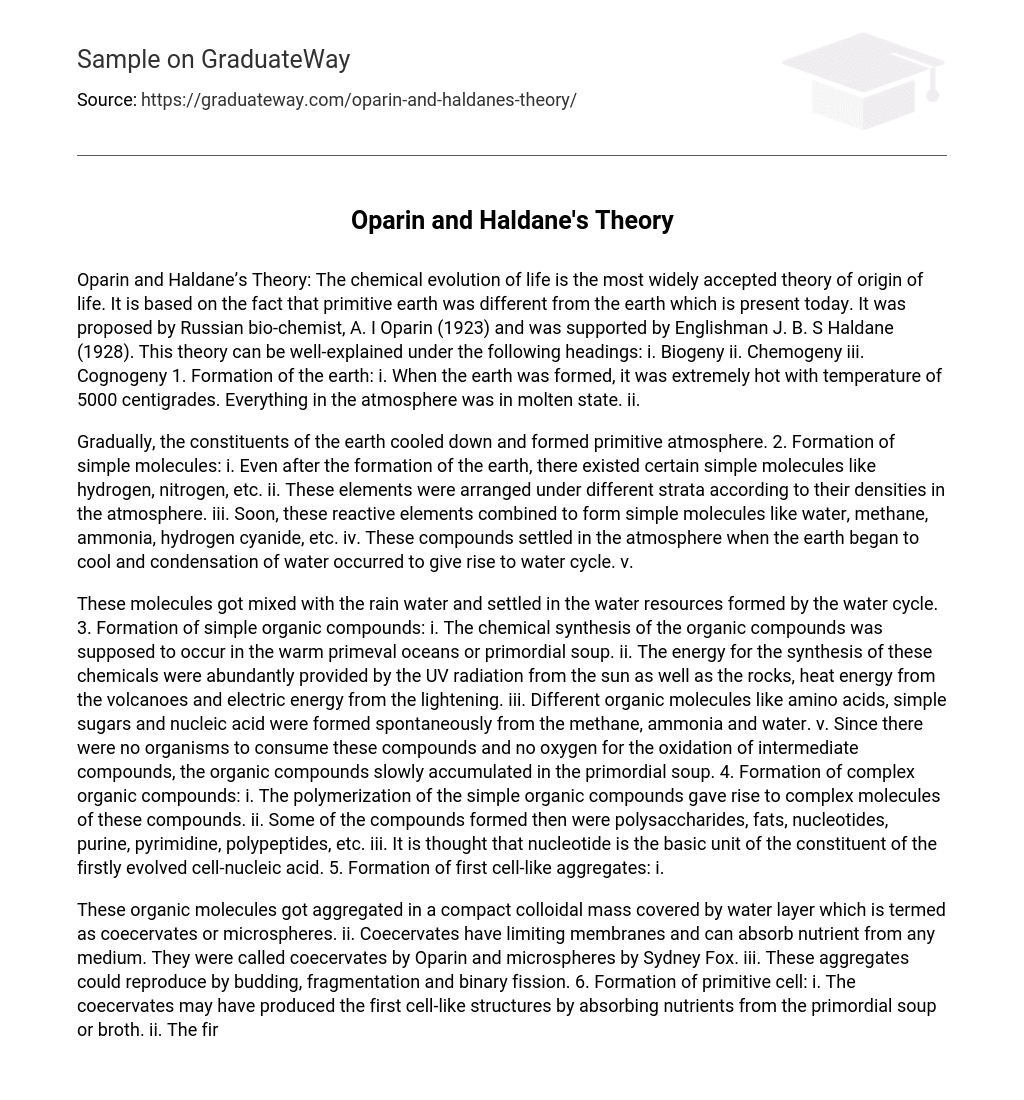The chemical evolution theory, proposed by A.I. Oparin in 1923 and later supported by J.B.S. Haldane in 1928, explains the origins of life on Earth. According to this theory, the early Earth was very different from how it is today. To effectively understand this theory, we can explore it through the following categories:
- Biogeny
- Chemogeny
- Cognogeny
Earth’s formation
The earth’s temperature during its formation reached an extremely hot 5000 degrees Celsius, causing the entire atmosphere to become molten. Gradually, the components of the earth cooled down and eventually formed a primitive atmosphere.
The process of forming basic molecules
After Earth’s formation, hydrogen and nitrogen were present as separate molecules in different atmospheric layers due to their densities. Eventually, these reactive elements combined to form essential compounds such as water, methane, ammonia, and hydrogen cyanide. As the planet cooled down and condensed water appeared, these substances settled in the atmosphere and became part of the water cycle. The combination of rainwater with these molecules then collected in various water sources due to the cyclical nature of water.
Creation of basic organic substances
Chemical synthesis of organic compounds in the warm primeval oceans or primordial soup was expected. Various sources, including UV radiation from the sun, heat energy from volcanoes, and electric energy from lightning, abundantly provided the necessary energy for this synthesis.
From methane, ammonia, and water in the primordial soup, various organic molecules such as amino acids, simple sugars, and nucleic acid were naturally generated. The absence of organisms to consume them and a lack of oxygen for intermediate compound oxidation allowed these compounds to gradually accumulate.
Formation of complex organic compounds
The initial cell that emerged comprised intricate molecules like polysaccharides, fats, nucleotides (the building blocks of nucleic acid), purine, pyrimidine, and polypeptides. These complex molecules were created by combining simple organic compounds through polymerization.
First cell-like aggregates formation
These organic molecules formed a dense colloidal mass with a water layer around them, known as coecervates or microspheres. Coecervates have membranes that limit their boundaries and can absorb nutrients from any environment. They were named coecervates by Oparin and microspheres by Sydney Fox. These aggregates had the ability to reproduce through processes such as budding, fragmentation, and binary fission.
Primitive cell formation
The coecervates potentially created the initial structures resembling cells by assimilating nutrients from the primordial soup or broth. These structures, known as eobionts or pre-cells, were capable of division and were called protobionts by Oparin. They emerged around 3800-4200 million years ago.
Evolution of cells
The initial cells were anaerobic, prokaryotic, and chemoheterotrophs. They multiplied significantly, causing a shortage of food. Consequently, they began searching for alternatives, resulting in the formation of photoautotrophic, anaerobic, and prokaryotic organisms. Cyanobacteria, the first aerobic photoautotrophs, emerged approximately 3300-3500 million years ago. These organisms, residing underwater, released oxygen into the atmosphere via photosynthesis, thus transforming the atmosphere into an oxidizing type.
This led to the evolution of the first terrestrial photoautotrophs, marking the end of abiosynthesis and the beginning of biological evolution. Bacteria, moulds, and cyanobacteria were the dominant life forms for a substantial period, if not the only ones. Gradually, blue green algae transformed into various other algae species. Prokaryotes evolved slowly through mutation, eventually leading to eukaryotes. In conclusion, life originated from gradual changes in the earth’s atmosphere and resulted in the formation of the first cell up until now.





